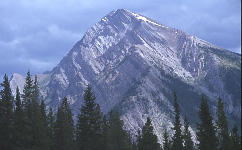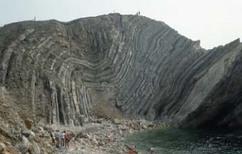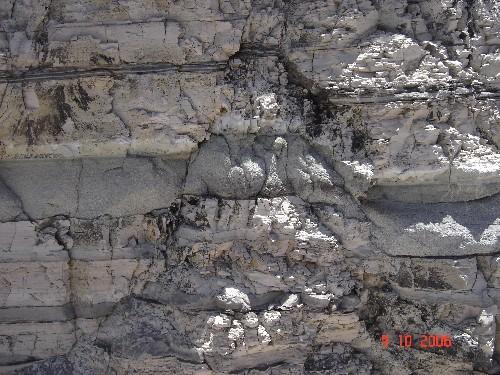Types of Deformation
Folded rocks at km-scale; A syncline in the Front Ranges of the Canadian Cordillera
Image Credit: C. Heubeck
Folded turbidites, Ouachita Mountains, Arkansas, USA
Image Credit: C. Heubeck
Normal faults in pyroclastic material; Guayallabamba, Ecuado
Image Credit: MBG
Deformation occurring along plate boundaries as result of compressional or tensional forces at regional scale is reflected in nature by the presence of faulting and folding of rocks in outcrops at a smaller scale. When rocks are deformed under conditions of elevated pressure and temperature, they undergo changes in their shape and / or volume. Rocks can react to the presence of these forces by either plastic or by brittle deformation.
The result of such behaviour are geologic features such as faulting (fracturing and displacement), folding (bending of rocks) and shearing (sliding parallel to the plane of contact between two rocks or rock units).




